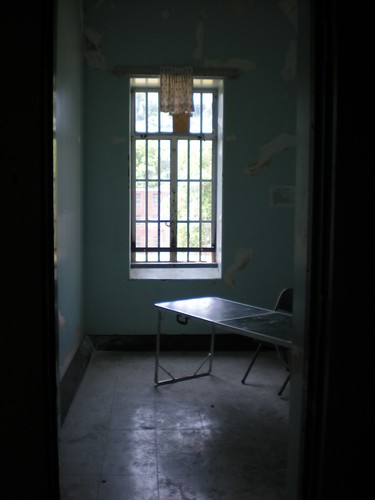 This photo can be found Neshachan's Flickr photostream. It portrays sadness and depression.
This photo can be found Neshachan's Flickr photostream. It portrays sadness and depression.
Recently, I was reading a string on a craft blog basically supporting the view that in order to produce good art, one must be suffering or sad or depressed. When a person experiences loss or grief the mind fills with creative ideas and the need to express the emotional pain through art or craft. The person leading this discussion said that since she had found a wonderful man to be with her life had settled down and she was the happiest she has ever been. The problem is that now she is having trouble creating and coming up with ideas.
I think this view is an unhealthy one. To rely on drama or tragedy to provide a muse to create really is a cop out. Being an artist or crafter is something that you either are or aren't. You aren't going to create great art if you don't get in the studio and start working....on anything. That's right...anything. If you don't get in there and pick up the tools and start making something, nothing creative will have a chance to happen. Sometimes just starting will take us to places we never could have imagined. It is okay to give ourselves permission to be happy and celebrate joy in our work. We don't always have to express something dark and complicated. We don't always have to scream for the world to hear what we have to say. Happy can be just as deep as sad. Inspiration can be found in anything. 
This glass sculpture by Dale Chihuly can be found on his website. This sculpture portrays fun, joy, and happiness.
Sometimes what we make when we think there is no muse can be so profound. Try committing to 10 minutes of activity in the studio. Let what you make be intuitive with no intentions and no conditions. Just make something. Maybe just do an exercise. For example, say you will make something only using blues. Or, maybe make something using only one tool or one material. Do something totally in the realm of play. Take time to play, and your work will become richer and more interesting. We are so blessed to have the gift of being able to work with our hands, creating something out of nothing. Even the things we make that never get sold or given away have purpose. Every piece we make leads us to the next piece, and the next. If we avoid the studio because the idea hasn't been delivered to your front door, you are missing opportunities. The idea will probably only be delivered if you are in the studio working, ready to receive it.

2 comments:
I can relate to the woman in your example. When I was first married, my level of satisfaction in my marriage matched and then replaced what my natural means of expression had given me since the fifth grade. I didn't write for several years. And I didn't make this connection right away because I didn't see yet how I'd been writing chiefly out of a source of pain; I just knew I'd stopped writing...and that I didn't "need" to write. And yet I did need to on a fundamental level.
Or, rather, I needed to write differently but I didn't know how. Sometime before my 30th birthday I realized I didn't like using my writing (or my marriage for that matter) as an escape pod from old hurts. It struck me as immature. Despite all my formal training, however, I didn't know how to change the attitude through which I had been regarding the world. My default setup is melancholic. When that's all you've ever known, it's a funk tough to look beyond.
And then, ironically enough, I read a favorite novel I hadn't picked up since high school. It was like my eyes had been uncrossed and I could finally see beyond myself. I could see more than despair, certainly, but I also could see more than beauty. Both sadness and happiness are made up of stark truths hidden within miasmas of emotion. For some reason at that point in my life, this favorite old story I re-read was able to help me find the solid bits and parts of happiness. And I began to write about them.
Since then I've gone through another dry spell in which my pens might be better used in a game of darts on an acoustic tile ceiling. But I've been encouraged by what Kathleen Norris, a poet, observed about prairie grass. She calls it "a perfect metaphor for the creative process." During times of drought, the grass "seems to die all the way to the roots..." Yet "it's a question of being patient and having faith that the writing process isn't dead, but rather just going through some kind of transformation" because, referring once more to the grasslands, "the minute there's moisture, it just springs green."
I appreciate your practical advice about working on your art, how it can be work and what that work can look like. I've rarely journaled formally but I jot notes on scraps of paper. I'm trying to keep my eyes open and uncrossed, to "remain," as Kathleen Norris concluded, "at least alert enough to receive what the world is trying to give" me.
Glad you liked my photograph!
- nessa
Post a Comment